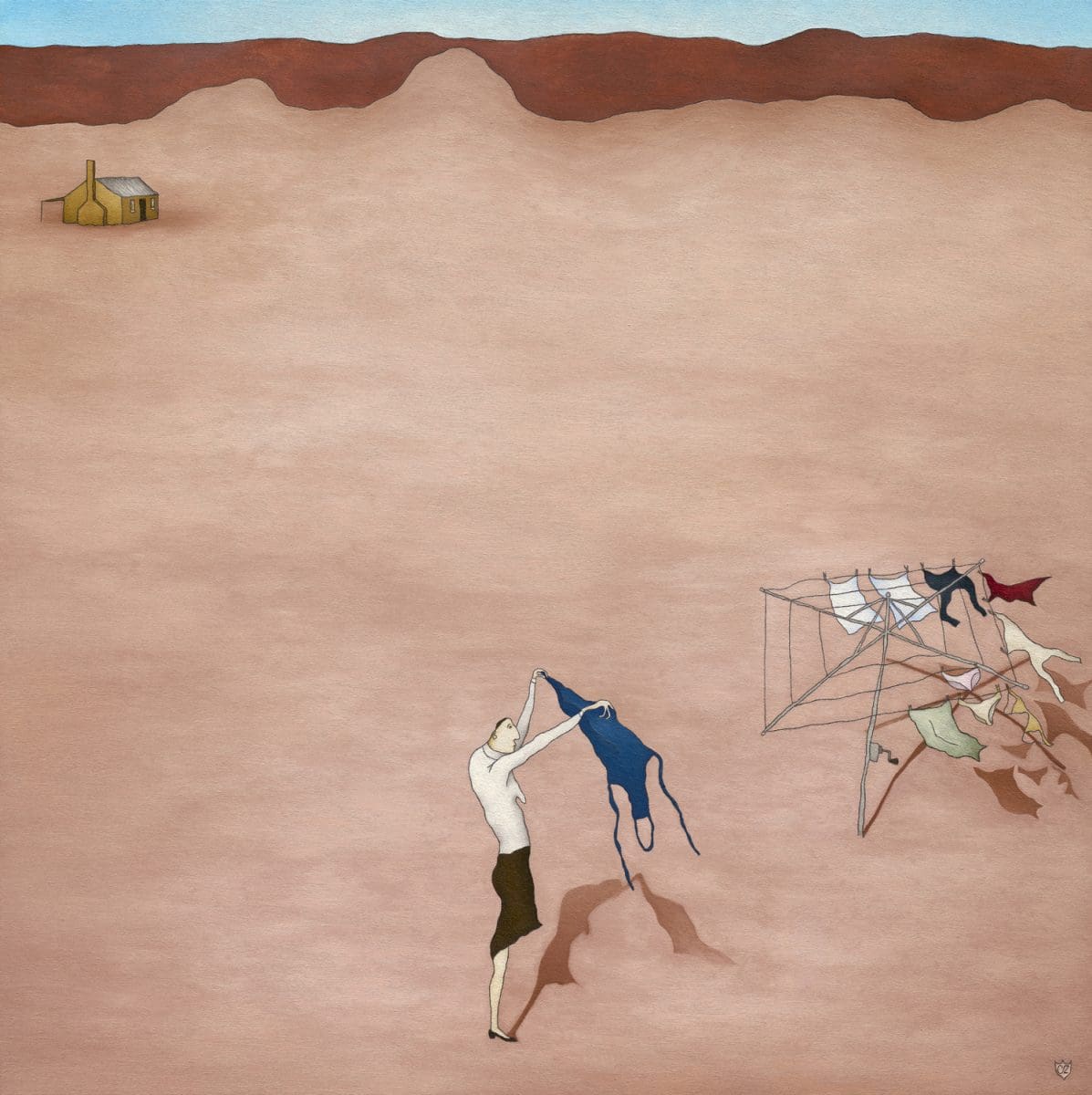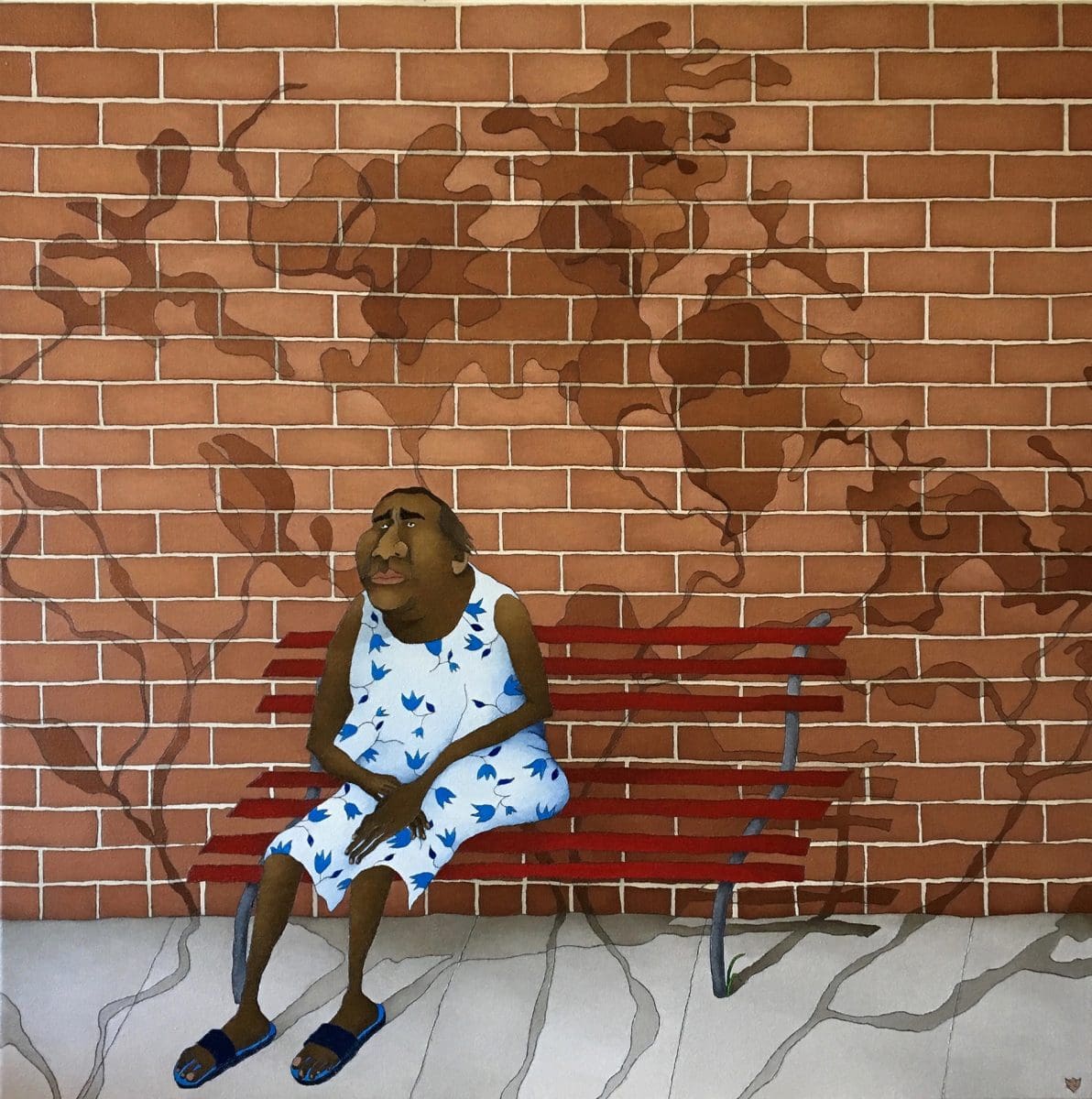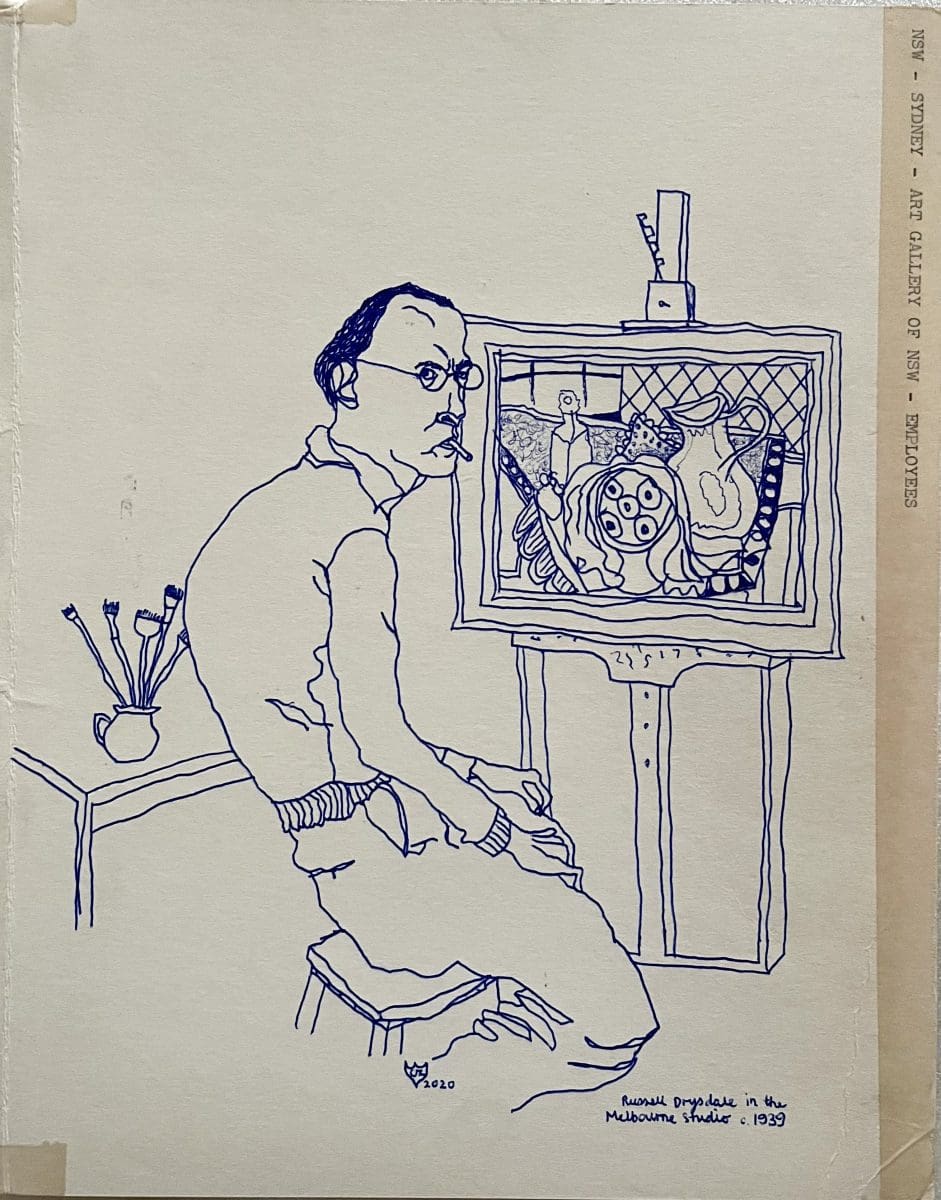
Material curiosities: Primavera 2025
In its 34th year, Primavera—the Museum of Contemporary Art Australia’s annual survey of Australian artists 35 and under—might be about to age out of itself, but with age it seems, comes wisdom and perspective.





In 2020 Sydney-based painter Caroline Zilinsky visited Cameron Corner, a remote town close to the border junction of New South Wales, Queensland, and South Australia. Zilinsky chose this route to retrace a journey taken in 1944 by artist Russell Drysdale to record drought conditions.
“Once I had mapped out his exact journey, I travelled to Broken Hill, Silverton and Tibooburra, sketching and photographing as I went.” The outcome of Zilinsky’s outback travels is Barren Land, an exhibition of portrait and landscape paintings, completed over a two-year period. “The paintings are a very intimate portrayal of the people I met and how they had been shaped by such an immense and remote land,” Zilinsky explains.
As she followed in Drysdale’s footsteps, Zilinsky quickly discovered an overwhelmingly male dominated history visually recorded by a long line of artists before her. “The Australian outback is such a strange place it almost dictates certain narratives. Towns like Cobar and Broken Hill are rugged places built on the back of mining and the outback stations are huge and unforgiving. As I painted, I felt as though I was engaged in a conversation with painters of the past—Tom Roberts and his shearers; Sidney Nolan and Ned Kelly; Pro Hart, Arthur Boyd, Rick Amor, Clifton Pugh, and Drysdale.”
The latter three artists played an influential part in Zilinsky’s journey. By chance, she had made her way to Tibooburra seeking accommodation for the night. Walking into the Family Hotel, she discovered a series of large murals featuring work by Pugh, Drysdale and Amor covering the walls near the bar.
Speaking with the publican, Melissa Thomson, Zilinsky learned the story behind the murals. “Melissa informed me Pugh had owned the pub in the 1960s. During the huge flood of 1970, all three artists had been trapped inside for weeks and in lieu of canvas had taken to the walls to paint.” Around the corner was a portrait by Drysdale—a barely distinguishable outline of two figures bearing the inscription, To Barney the Old-timer, Russell Drysdale 1970.
After confirming Zilinsky’s artistic credentials and admitting, “I wouldn’t let any old person touch my Drysdale,” Thomson asked if Zilinksy would restore Drysdale’s linework. Upon her acceptance, Thomson left the light on, and the pub door unlocked. At 4:30am Zilinsky started her restoration. “In the silence of a red, dusty town still sleeping, I traced the lines of the master I had gone there to follow. From one painter to another, the silent communication was profound.”
After connecting with Drysdale in such a serendipitous and memorable way, Zilinsky was also deeply moved by the strength and tenacity shown by women living in the outback. “On one of our long drives my friend Fiona Lucas said to me, ‘You know, it’s the women who are strong out here, they hold the place together.’ Those words really resonated.” Several paintings in Barren Land reflect this point of view. Annie O’Connor from the Mount Arrowsmith Sheep Station is the subject of The Rise of Annie O’Connor, 2022 and Thomson is a central figure in Saturday Night at the Family Hotel, Tibooburra, Karengappa, 2022.
Another prominent feature of Barren Land is the landscape. Like a recurring character, in works like Villa Borghese, 2022 and Wilyakali Wonderer, 2022, Zilinsky captures the expanses of red earth synonymous with the Australian outback, highlighting the isolation of those living in remote pockets of a vast environment.
Looking back on her epic journey Zilinsky concludes, “as a painter I gained great insight into how many of the themes central to Australian painting emerged.” Not only had she connected intimately with Drysdale’s past, but she had also forged an important chapter in her own practice. “I now look at this body of work [in Barren Land] and feel as though I have told my story of the places I went and inadvertently, it is from a uniquely feminine perspective.”
Barren Land
Caroline Zilinsky
Nanda\Hobbs
28 July—13 August